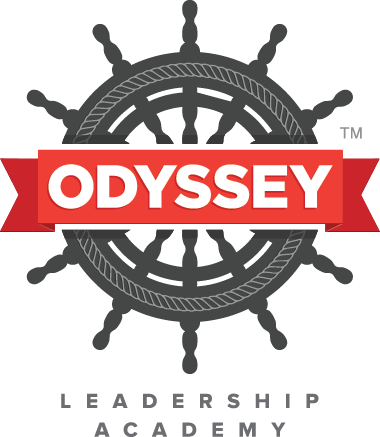Romanticism
“Romanticism in Harlem: By James Golston Jr
Romanticism in Harlem is a podcast-style analysis of Claude McKay’s poem “If We Must Die”. In one of our discussions in class we talked about how indescribable the definition of romanticism is. How do you confine something to a description that's entire purpose is to breach confinement and explore this idea of nature and natural truth. This idea of a feeling and movement that transcends definition brought me to wonder how much reach Romanticism has on our recent history and present moment. Looking at the Harlem Renaissance the broad similarities between it and romanticism are fascinating. Harlem Renaissance showcased a reimagination of black identity through creative mediums. The romanticism era began in response to the Enlightenment, a reliance on logic without much emotional consideration. The Harlem Renasiance came out of the Negro Enlightment reaching its height of backlash. Both though through different situations and circumstances came to creative expression out of logic. My main interests in writing and making this project is to explore what it looks like for 1. a romantic poet to express an experience I have lived through and 2. showcase the appeal and beauty of romanticism from a perspective and poet that may hit closer to home than others. Overall, creating this podcast-style analysis was new and challenging and fun. I hope that I was able to present it in a way to where those listening can interact with the piece. Learn more about Claude McKay and compare their thoughts on the poem before the analysis and after.
Romanticism: A New Heaven by emma c.
My project is an artistic interpretation of women’s societal position (or lack thereof) during the Romanticism Era. The project is a bust sculpture of a woman, created using lace with the words, “can you see me?” This question is in reference to the many women authors during this time period whose only mode of expression was through their words. Thus, being shown by the sculpture’s transparency brought on by the lace, producing an “invisible woman”. Depicting also, the prison-like form of ‘romantic’ femininity by creating a haunting, hollow form of a woman using such common feminine elements such as lace and embroidery. This project was created using common household objects such as lace fabric, elmer's glue, and embroidery thread.
Joanna B.
I was in the class Romanticism, and we read the book Jane Eyre, which is a novel written during the Romantic Era by Charlotte Brontë. The story was based loosely on the author’s life. Charlotte did not have an easy life, in fact she experienced a very difficult life full of a lot of trauma during the nineteenth century. Charlotte Brontë suffered from patriarchal structures during that time, which ultimately led to Charlotte feeling confined and trapped. She reflects that in her book through a popular quote of her’s which reads “I am no bird; and no net ensnares me; I am a free human being with an independent will.” My project is an embroidery piece of Frida Kahlo inside of a cage, which for me represents someone who has experienced a very difficult life which includes confinement and entrapment, similar to Jane Eyre and subsequently Charlotte Brontë. I chose this project because in class we read an excerpt from The Madwoman in the Attic which discussed female confinement which, to me, was very compelling.
Randi W.
Romanticism is a literary and historical class which explores the literary movement and philosophical undertones of said epoch. Following the Enlightenment, Romanticism undermined the Enlightenment’s cultural fixation on reason in favor of the emotional – and distinctly natural – self. In this course, students read a wide variety of Romantic literature, and engaged in philosophical debates on subjects such as reason, gender, revolution, industrialism, innovation, and objectivity. Authors such as William Wordsworth, Jane Austen, Lord Byron, the Brontë sisters, and John Keats were all juxtaposed and examined by the class. Particularly, students read Jane Eyre by Charlotte Brontë – which employs the usage of heavy symbolism, par for its Romantic language. A famous and clever symbol within the novel is a chestnut tree. The appearance and eventual destruction of the tree signals the decline of Jane Eyre and Mr. Rochester’s relationship, and pulls on a larger body of botanical symbolism.
Using the 3D modeling software Blender 2.8, I sculpted a chestnut tree being struck by lightning. I chose this project because I wanted to engage in a virtual medium, while also using Romantic imagery. During the course of this project, I learned how to 3D sculpt, and additionally, the importance of symbolism in literature.
Ella
My project is based on Edward Rochester, a primary character from the book Jane Eyre, which is the book my romanticism class learned about!
What influenced my project the most was Edward Rochester himself since his character went through a tragedy of losing his eye I wanted to be able to project that into art!
As you can see, this is a picture of Edward rochesters eye, within the eye is the people that impacted his life, Jane, Bertha, Ingrid, Adele, Mrs. Fairfax, Richard Mason, Grace Poole, and even the beloved pilot!
The main idea in this artwork is tragedy, I wanted to show how sad it is to lose something that important, Edward is a smart man but now that he is blind he will have great difficulty learning and taking care of his family. What I learned from this project was how impactful someone can be no matter how little their contribution can be, they can still have great impact in your life, both Edward and Jane were impacted by lots people which lead to a happy ending!





